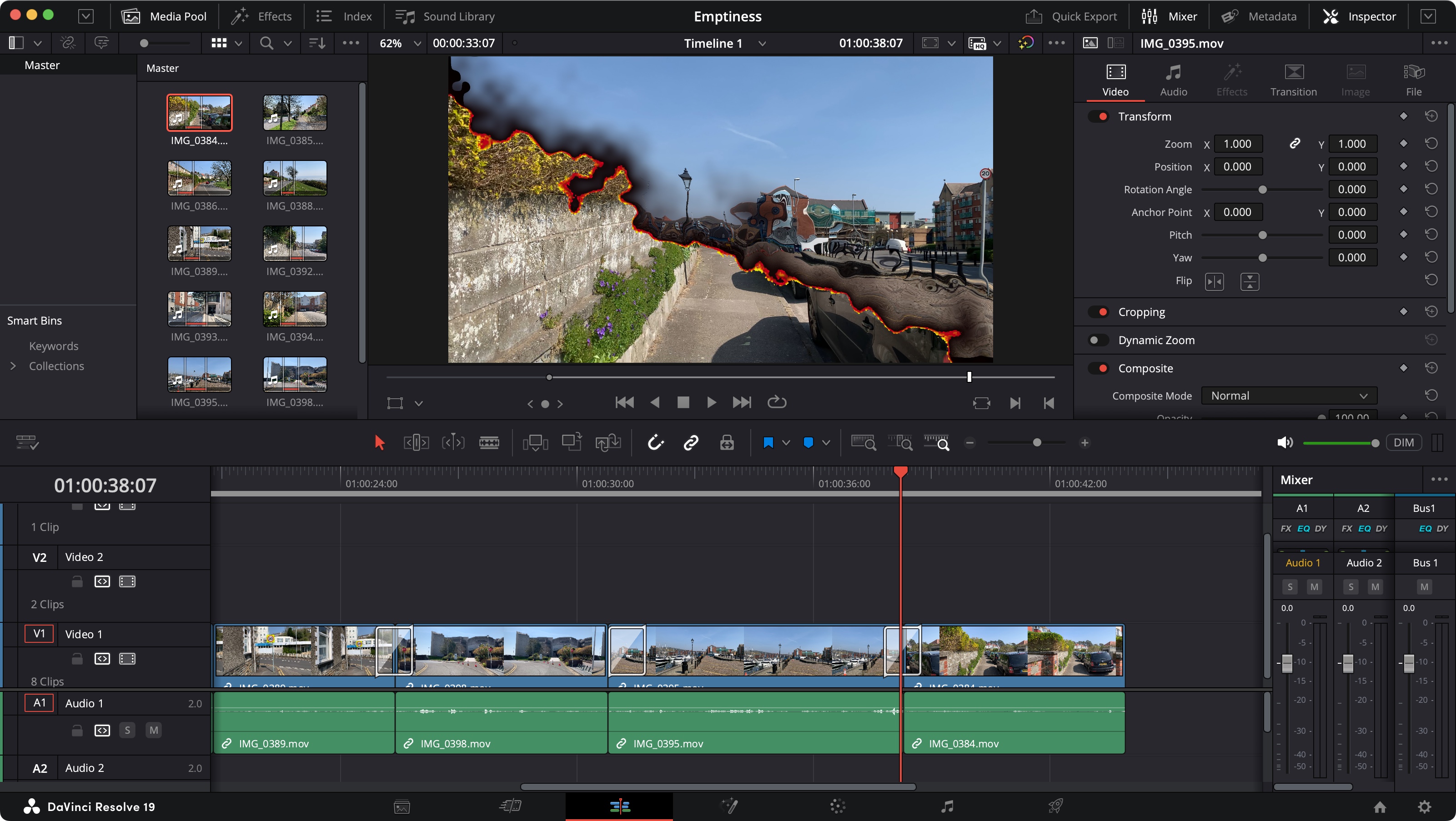Surface Pro 7 vs iPad Pro: which should you buy?
Looking at Surface Pro 7 vs iPad Pro? We've got you covered with this in-depth look at the two brilliant tablets.
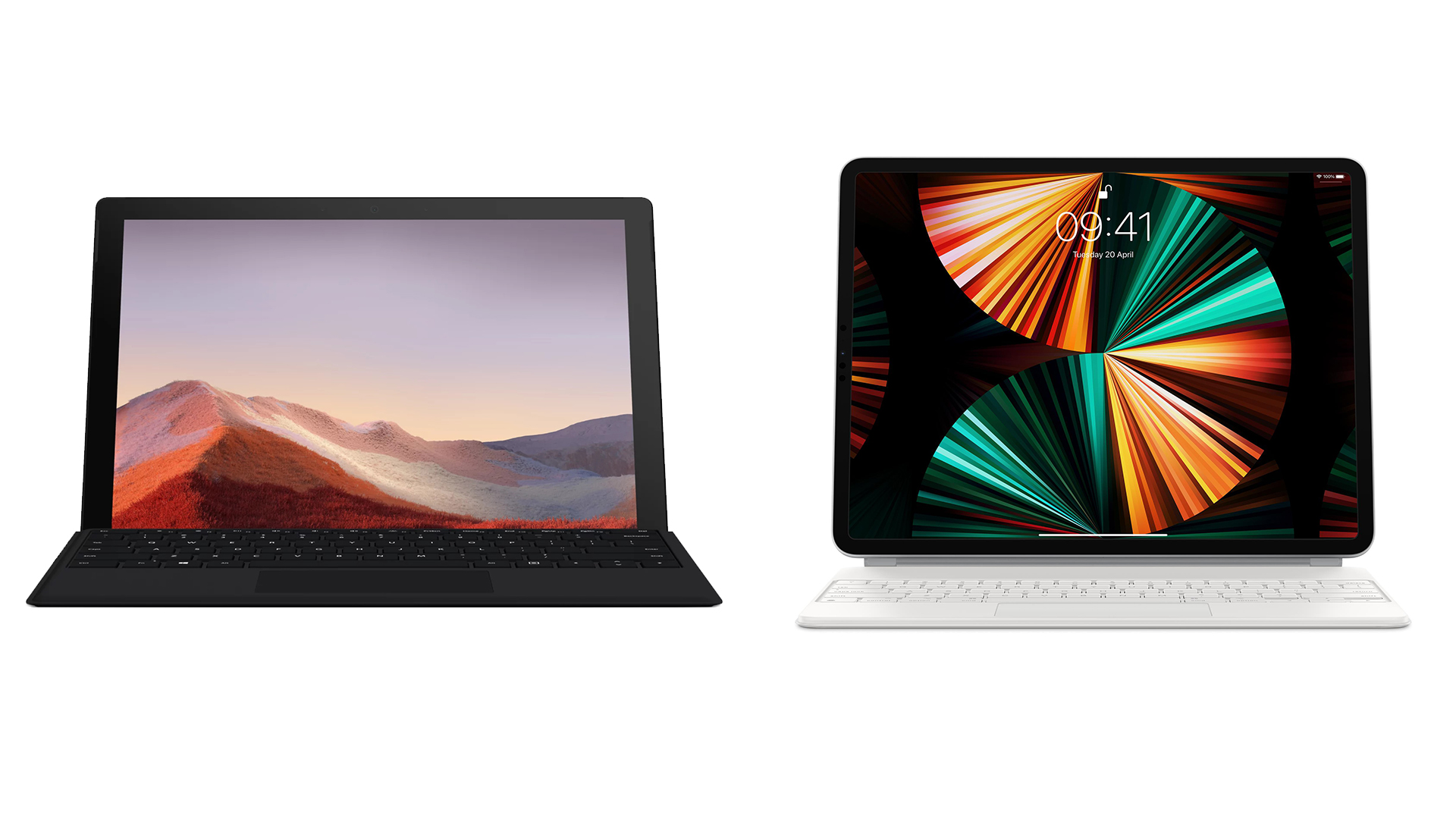
You're facing the question of Surface Pro 7 vs iPad Pro if you're looking at getting a tablet with pro appeal. Apple has just updated its high-end tablet with a brand new version that brings the huge power of the company's much-lauded M1 processor, while Microsoft's Windows tablet was updated in 2019 with new chips and USB-C.
These two tablets take very different approaches to the idea of a 'pro' tablet, with Microsoft aiming to mix the flexibility of PC software with a tablet's advantages, while Apple is all-in on customising for touch control and tablet-friendly hardware. If you want to see our in-depth verdict on each of these devices individually, be sure to read our full iPad Pro M1 review and Microsoft Surface Pro 7 review.
So how much of a difference do these different approaches make in real life, and how might they push you towards one tablet or the other? We'll break it all down, because even though the iPad Pro 12.9-inch currently tops our pick of the best tablets for photo and video editing), there are good reasons to pick the Surface depending on your needs.
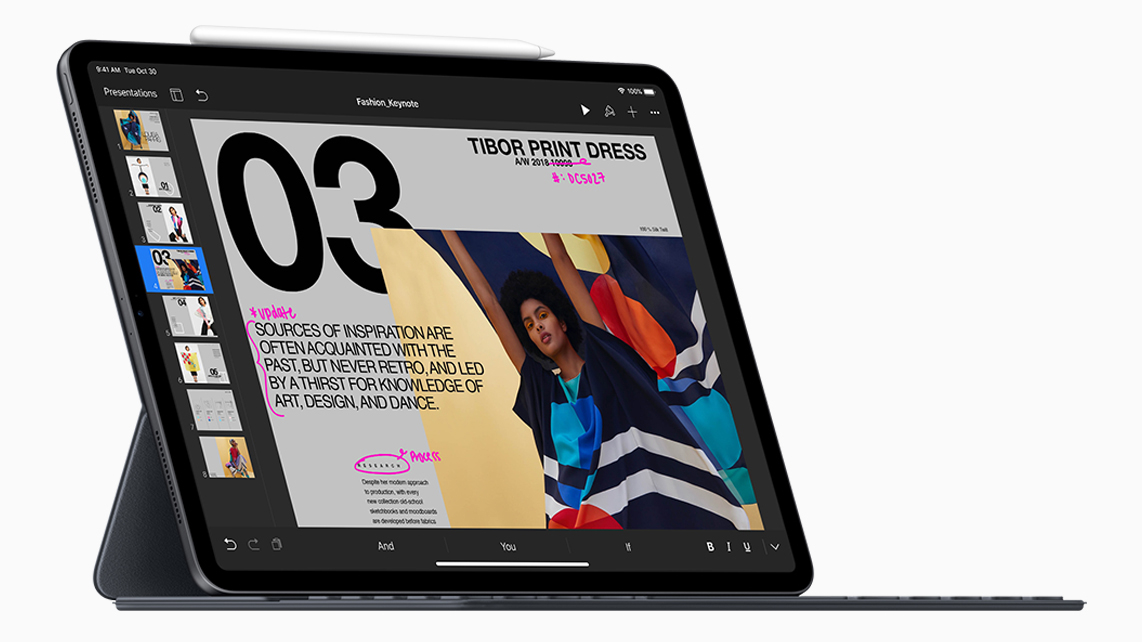
Surface Pro 7 vs iPad Pro: Performance
There's only one winner here when it comes to sheer horsepower and speed in real-world use, and that's the iPad Pro, thanks to the ridiculous power of the Apple M1 chip. Remember, this is the same processor used in the Apple iMac 24-inch M1, where it beats other equivalent desktops for performance, let alone tablets.
It's an eight-core processor, with 8GB for RAM if you choose a model with up to 512GB of storage, and 16GB of RAM if you choose one with 1TB or 2TB of storage. Its single-core performance is simply massive – far beyond Intel's mobile chips – and it's also top-tier when it comes to multi-core tasks that tax everything at once.
The eight-core GPU is also a beast when compared to other integrated graphics options – it's again the most powerful chip of its type we've seen in a tablet.
The Surface Pro 7 offers a broad range of processor options at different price points, drawn from Intel's 10th-gen processor range (which is no longer its latest and greatest, due to the Surface Pro 7 hailing from 2019). The top-of-the-line chip is a Core i7-1065G7 (quad-core, capable of Turbo up to 3.9GHz).
Get the Creative Bloq Newsletter
Daily design news, reviews, how-tos and more, as picked by the editors.
There's also a quad-core Intel Core i5-1035G4 available for a lower price, or a dual-core Intel i3-1005G1 at the entry-level prices.
You get Intel Iris Plus graphics with the i5 or i7 systems, but weaker Intel UHD graphics with the Core i3. System memory runs from 4GB up to 16GB, and storage up to 1TB.
There's only one winner here when it comes to sheer horsepower and speed
It's not easy to draw direct comparisons because of the fundamental differences between Apple and Microsoft’s hardware and operating systems here, but the best information to draw on from a cross-platform benchmark. Geekbench 5 is available on both platforms, and is designed to offer comparable results from different system types.
The iPad Pro scores around 1700 in Geekbench 5 for single-core performance, and around 6900 for multi-core performance. The entry-level Surface Pro 7 (i3) scores around 1200 for single-core and 2300 for multi-core. The high-end Core i7 model scores around 1400 for single-core and 4900 for multi-core.
Geekbench's scores are designed to be compared directly, meaning that the iPad Pro is around 20%-40% faster for single-core speed, depending on the model of Surface, and around 40%-200% faster for multi-core. Yes, in some cases, the iPad Pro can offer triple the performance…
However, productivity isn't just about the horsepower. We also have to bear in mind that the Surface Pro represents a fully-fledged desktop platform with Windows 10 and the diverse range of software packages the implies. Switching between touch and traditional mouse and keyboard modes is baked into the Surface Pro, from its software to Microsoft's keyboard covers. If you need guaranteed compatibility with niche desktop software even on your tablet, it doesn't matter how fast the iPad Pro is – it simply doesn't offer this.
However, when it comes to using app that are optimised for touchscreens at this kind of size, the iPad is way ahead. It has the best and most broad-ranging tablet app ecosystem by a huge margin, and there are massively powerful tools, some of which may even be preferable to their PC versions for various reasons. These days, iPadOS offers split-screen multitasking, mouse support, solid file management, and is generally much more conducive to complex work than it used to be.
That said, it still bears a lot of the 'phone software' DNA that created it, and there can be workflow friction from that, especially when it comes to working with or moving multiple files between apps.
Both devices aim to offer around 10 hours of battery life in use for light web browsing – anything more intense can see that dropping.
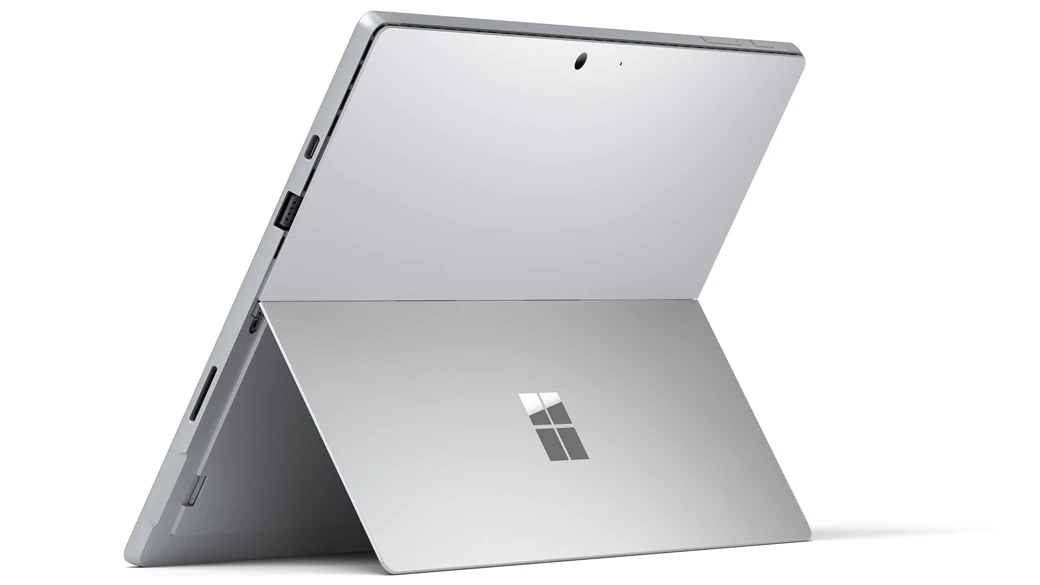
Surface Pro 7 vs iPad Pro: Connectivity
Microsoft introduced USB-C to its Surface Pro products for the first time with the Surface Pro 7, something which was long overdue. It's paired with a USB Type-A connector, along with the Surface Connect port for accessories, a microSD slot for storage expansion, and a 3.5mm audio jack. Wi-Fi 6 and Bluetooth 5.0 handle wireless duties.
The iPad Pro includes a single USB-C port, though this double as a Thunderbolt 4 port, meaning that it's capable of ridiculous bandwidth, and can support external displays of up to 6K resolution. The iPad also has its Smart Connector for accessories, and also offers Wi-Fi 6 and Bluetooth 5.0 for wireless.
The iPad Pro has one other trick here: you can choose to outfit it with 5G connectivity as well as all the rest here.
So the Surface Pro is clearly the more flexible option for physical ports, being less likely to require an adapter when someone hands you a USB stick, and offering the ability to expand its storage via microSD. Musicians and video editors will also like the built-in wired headphones option.
That said, the iPad's Thunderbolt port is the ultimate in connectivity, and if you attach the right kind of hub, it offers near-limitless connection potential. You'll just have to work a bit harder to use it.
The ability to add cellular connectivity can be a big draw as well – 5G's speed is a game-changer for working on creative projects or photos on the go and then uploading to the cloud, or sending to a colleague or client.
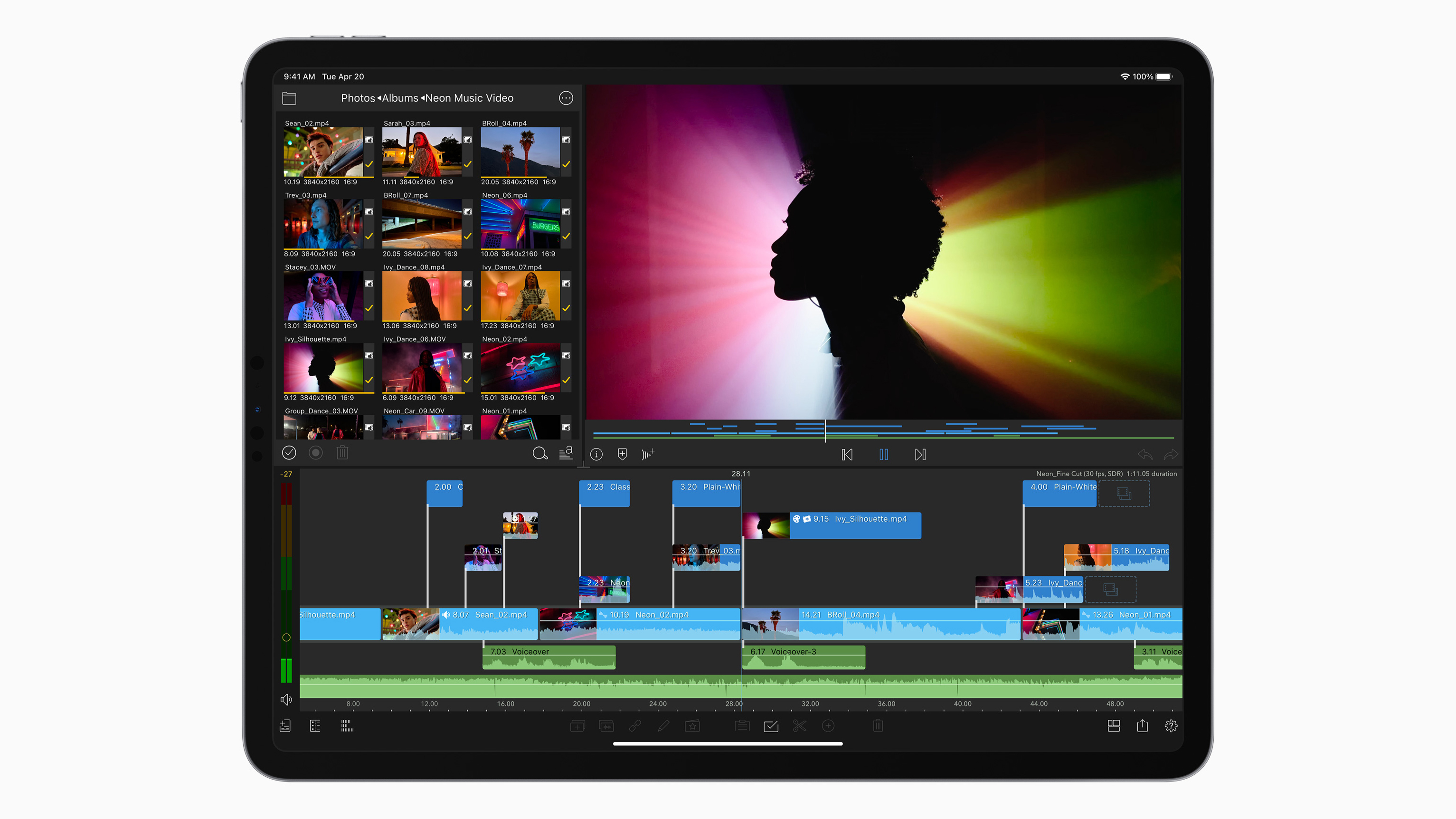
Surface Pro 7 vs iPad Pro: Display
There are three different displays we need to talk about here: the iPad Pro 12.9-inch, the iPad Pro 11-inch, and the Surface Pro 7's, because there are big differences between all three.
The Surface Pro 7 has a 12.3-inch display with a 2,736 x 1,824 resolution, giving a pixel density of 267 ppi. That's an unusual 3:2 aspect ratio, which is slightly wider than the iPad Pro 12.9-inch, and around the same shape as the 11-inch iPad Pro. It offers a typical 400 nits of brightness.
The iPad Pro 12.9-inch model has a resolution of 2,732 x 2,048 resolution, giving 264 ppi. It also supports the wider DCI-P3 colour gamut, and hits a significantly higher typical brightness of 600 nits, and features a maximum refresh rate of 120Hz. Apple's True Tone tech is also an option here – this adjusts the screen's colour temperature to match the ambient lighting in the room, making it much easier on the eyes, and removing the blue cast you notice on most screens. It's a big, big quality of life upgrade.
However, the 12.9-inch iPad offers one other key trick: it's a mini-LED display, and offers even better performance when viewing HDR video or photos. Play a video in the right format and the brightness ups to 1,000 nits of typical full-screen brightness, and peaks at 1,600 nits for HDR highlights. There are also around 2,500 backlight dimming zones, which means it offers much more realistic black tones and dark areas, and this applies in everything you do – not just HDR video.
The iPad Pro 11-inch has a resolution of 2,388 x 1,668 (also 264 ppi), and offers all the same features as the iPad Pro 12.9-inch, expect that it doesn't include the HDR-ready mini-LED panel, so its brightness maxes out at 600 nits.
All these screens are super-sharp, then, and while both devices look good, the iPad Pro has big advantages in brightness and colour reproduction, while the 120Hz screen is a very desirable improvement for drawing.
And then there's the mini-LED display on the iPad Pro 12.9-inch, which is simply the most spectacular screen we've ever seen on a tablet – the better black and dark area control is noticeable in everything you do on the tablet, and the brightness makes video look better than any device on the market.
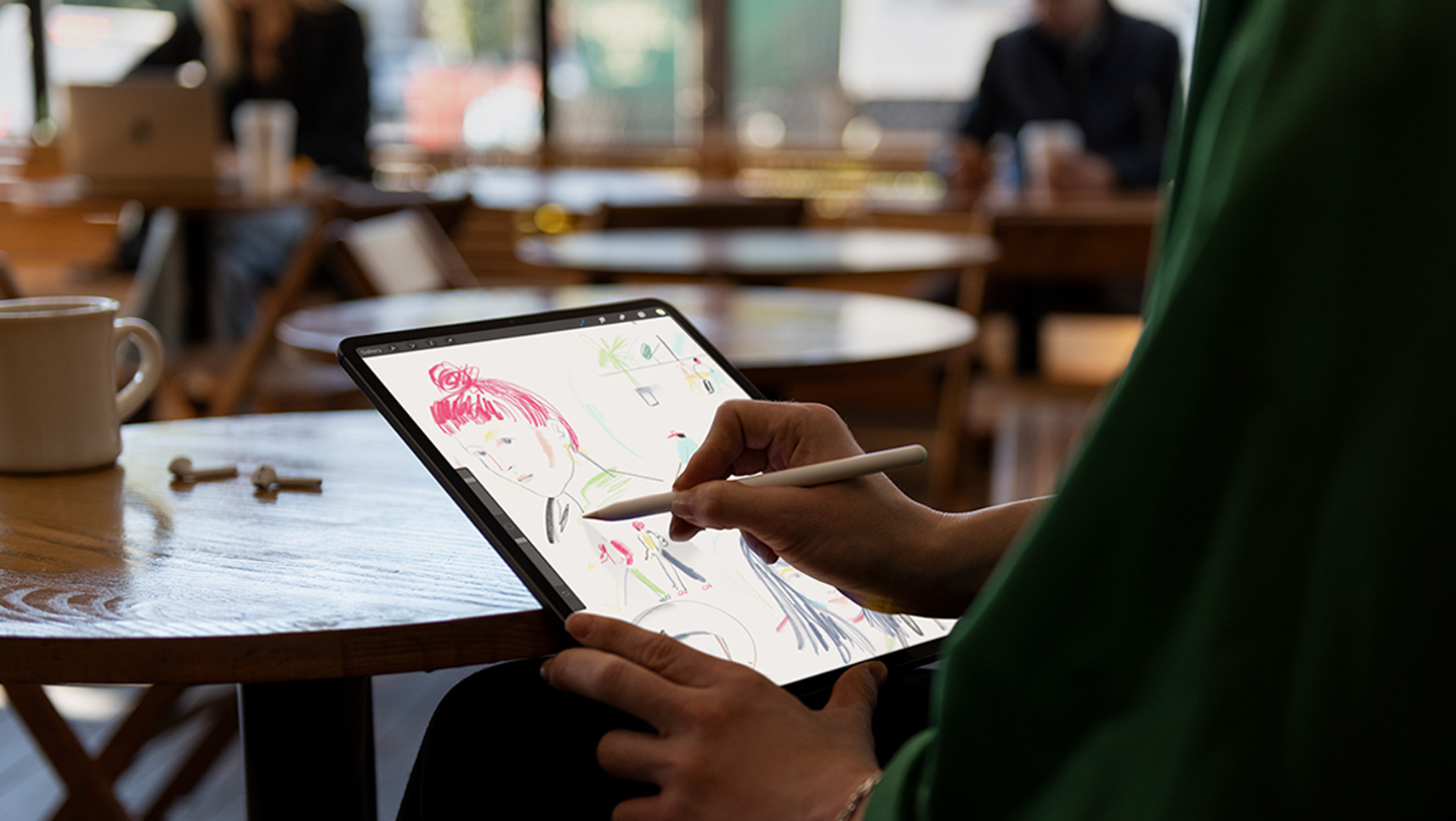
Surface Pro 7 vs iPad Pro: Pen(cil)
The new iPad Pro M1 still works with Apple’s second-generation Pencil, which is a lovely piece of kit. Its lovely matt finish feels like a real Pencil, and it's mostly feels very natural to sketch with the Pencil – the glass on the iPad is obviously very hard to tap the tip onto, but drawing is smooth.
The realistic feel has been improved even further by iPadOS reducing the latency of the stylus to just 9ms, while the 120Hz display means you see the results of your drawing twice as quickly as the 60Hz screen on the Surface Pro 7, which can really help to boost accuracy. This is one slick peripheral, make no mistake – we love that it magnetically attaches to the side of the iPad Pro for storage, and wirelessly charges while it's there, so it's always ready to right away.
The Surface Pen is a great stylus too, and also offers a very natural feeling drawing (or writing) experience with all the important features you need like tilt shading. There’s a new version of the Surface Pen, as well – a ‘Slim’ variant for those who prefer a thinner, flatter design. It’s obviously useful to have that choice for those creatives who go the Surface route.
Which pen you might prefer is something of a subjective matter, but generally speaking, Apple’s Pencil gets the nod, simply because it feels more responsive when jotting or drawing thanks to that super-low latency and high-refresh screen. Some creative pros do, however, prefer the feel of Microsoft’s stylus on the glass of the display.
Finally, note that the Surface Pen is a little cheaper – but on the other hand, the new Surface Slim Pen is more expensive than Apple’s Pencil. Speaking of pricing, let’s discuss that next, so prepare your wallet in advance…

Surface Pro 7 vs iPad Pro: Pricing
The new 2021 iPad Pro starts from £749/$799/AU$1,199, which is for the 11-inch model with 128GB of storage. You can upgrade the storage to 256GB, 512GB, 1TB or 2TB – as mentioned before, the latter two also upgrade the RAM to 16GB, from the 8GB in all other models.
The 2021 iPad Pro 12.9-inch starts at £999/$1,099/AU$1,649 with 128GB of storage. Again, you can choose all the same storage tiers, and you get the corresponding RAM upgrades. A 12.9-inch iPad Pro with 2TB of storage will cost you £1,999/$2,199/AU$3,299.
You can also add 5G connectivity to any iPad Pro model as an option extra, which costs an extra £150/$200/AU$250 over the base price.
Microsoft’s Surface Pro 7 starts at £799/$749/AU$1,249 for the base Core i3 model with 128GB of storage and 4GB of RAM. We wouldn't recommend this to any pros – or really, most people in general in 2021. The next step up is the Core i5 model with 8GB of system memory and 128GB of storage, which costs £899/$899/$AU1,499 – this is the minimum we'd recommend in practice.
Prices top out at £2,249/$2,299/$3,749 for the highest-end model, with a Core i7 CPU, 16GB of RAM and 1TB of SSD storage.
The iPad Pro is by far the better value at the lower end, then, though you get a smaller screen than the cheapest Surface Pro 7. Step up a little, and things get hazy – the basic Core i5 Surface is cheaper than the basic 12.9-inch iPad Pro, but only by a little. At the top end, though, the iPad is the clear winner for value again.
The accessory costs are a factor too, though, and they can make things interesting.
The Apple Pencil 2 costs £119/$129/AU$199, while the Surface Pen costs £99/$99/AU$139 for the basic version, and £129/$144/AU$234 for the Slim version. So, Microsoft has a small edge, but depends on which version you go for.
However, if you want to add a cover that double as keyboard and trackpad, Microsoft has a clear advantage. Apple's Magic Keyboard for iPad Pro costs £329/$349/$AU549 for the 12.9-inch model, and £299/$299/AU$449 for the 11-inch version. It works extremely well, but this is so expensive.
By comparison, the Microsoft Type Cover costs £124/$129/AU$249, and also offers both keyboard and trackpad. The Apple product is a better typing experience, for sure, but still…
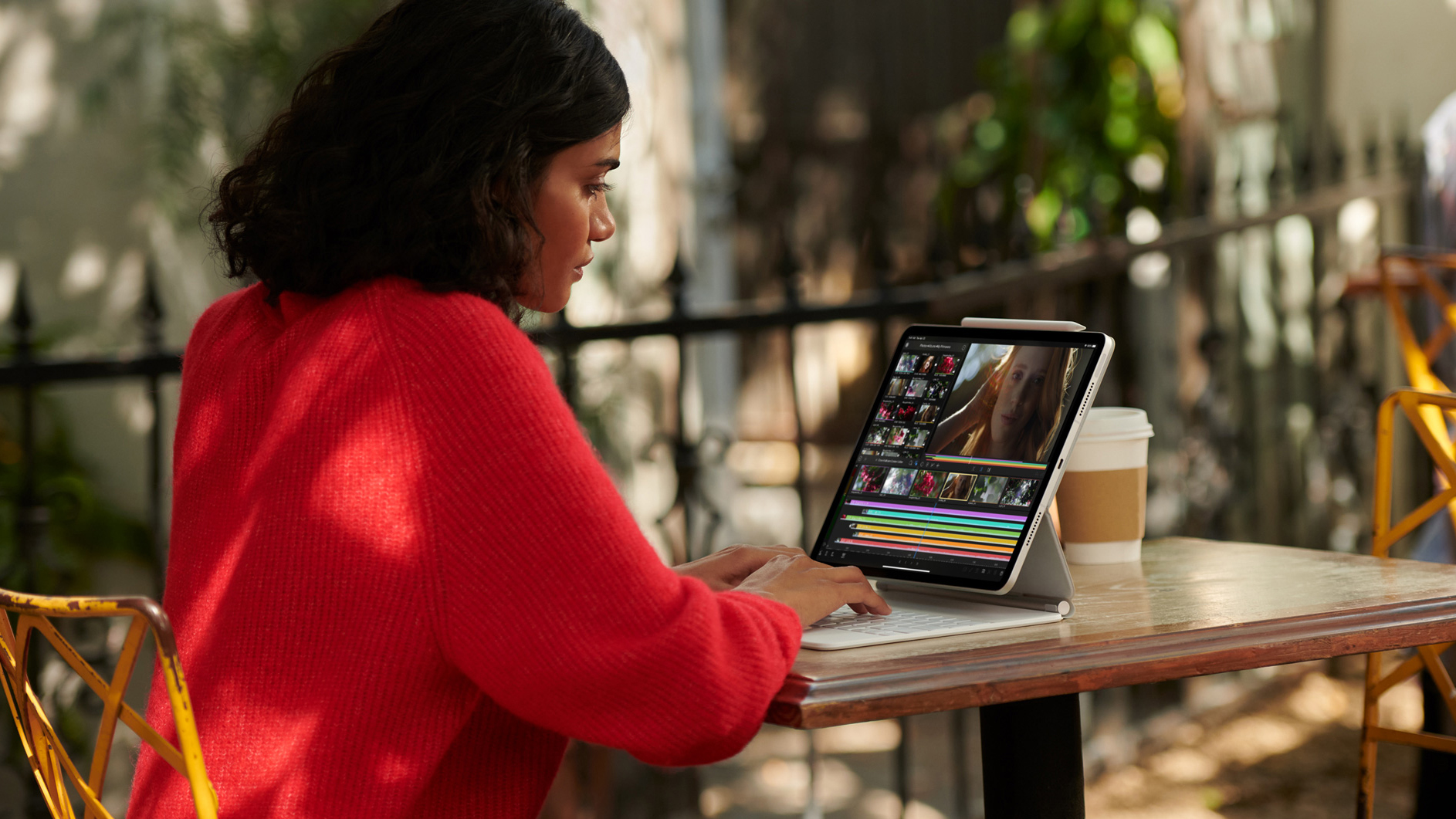
Surface Pro 7 vs iPad Pro: Conclusion
Both of these devices has situations where they might win for a particular buyer. The Surface Pro 7 is the jack-of-all-trades, built to be a tablet for when that's the best device mode for you, and to switch into being a real PC if you need that instead.
With its broader range of ports, various accessories, and the software compatibility that comes from running Windows 10, it's the device that can do anything you need in any situation.
However, we all the know the follow-up to the 'jack-of-all-trades' title is 'master of none', and this can certainly be levelled at the Surface Pro 7. Its usability as a tablet is weakened by running Windows 10, which has never truly figured out touch control; and its usability and power as a laptop is limited by its form factor when compared to the best laptops out there.
The iPad Pro matches pro-level power with features tailor-made for creative pros
The iPad Pro, meanwhile, is laser focused on being the best tablet for creative types that it can be. The screen on the 12.9-inch model is simply the best in the business, and the 11-inch model still beats the Surface Pro in every way other than size and resolution. And while both styluses are great, the iPad's is better integrated both in the hardware and software.
The iPad Pro also offers power in spades, meaning that it's much more future-proofed than the Surface Pro 7, which already looks a little long in the tooth when it comes to specs.
And then there's the apps – the Surface Pro might support any Windows app you can think of, but when it comes to actually using the apps to produce your best work, the iPad wins out, because its apps are made for its size and shape, and there are plenty of incredibly powerful creative tools to engage with.
Unless you need the specific flexibility and backwards compatibility that the Surface Pro 7 offers, the iPad Pro is the winner here, by matching pro-level power with features tailor-made for creative pros.
Related articles:

Thank you for reading 5 articles this month* Join now for unlimited access
Enjoy your first month for just £1 / $1 / €1
*Read 5 free articles per month without a subscription

Join now for unlimited access
Try first month for just £1 / $1 / €1

Beren has worked on creative titles at Future Publishing for over 13 years. Cutting his teeth as Staff Writer on the digital art magazine ImagineFX, he moved on to edit several creative titles, and is currently the Ecommerce Editor on the most effective creative website in the world. When he's not testing and reviewing the best ergonomic office chairs, phones, laptops, TVs, monitors and various types of storage, he can be found finding and comparing the best deals on the tech that creatives value the most.
